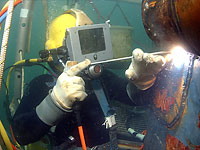A&P. This grocery chain, with about 400 East Coast outlets, struggled during the recession, and also took on lots of debt when it acquired competitor Pathmark in 2007. The financial strains became unbearable, forcing A&P to declare bankruptcy in December. The company plans to keep operating its stores, which include the Super Fresh, Waldbaum, and Food Emporium chains, while it restructures. It may also merge with another retailer, to broaden its scale and appeal.
Affiliated Media. Newspapers used to be nicely profitable--until the Internet became a ubiquitous source of free news, rupturing a decades-old business model. When this company, which publishes the San Jose Mercury News, Denver Post, and about 50 other newspapers, declared bankruptcy in January, it followed at least a dozen other newspaper publishers into Chapter 11. The good news is that Affiliated emerged from bankruptcy less than two months after filing, with a lot less debt, some new owners, and its papers intact.
Ambac. The main subsidiary of this bond insurer sold protection on mortgage-backed securities, which became the "toxic assets" that helped trigger the financial panic of 2008. Ambac has been trying to restructure its business since 2007, when the housing bust began to intensify, by expanding its more conservative municipal-bond business. But it finally succumbed to bankruptcy in November 2010--the biggest filing of the year, according to BankruptcyData.com. The firm is also dickering with the IRS over $700 million in tax refunds from prior years that it may not deserve.
American Media. Here's a tabloid shocker--dirt doesn't sell the way it used to. That's because the type of tawdry gossip peddled by Star and National Enquirer, this company's franchise publications, is available faster and cheaper on the Web, at sites like TMZ and Gawker. Other American Media titles, like Shape, Men's Fitness, and Natural Health, are also struggling to hold onto advertising revenue as publishing migrates to the Web. By November 2010, American Media had a debt load seven times the value of the company, which drove it into bankruptcy. It hopes to emerge soon, with less debt and most of its businesses intact.
Blockbuster. This movie-rental chain failed to notice the future happening all around it. While Blockbuster was doubling down on retail stores and dunning its customers with loathsome late fees, Netflix wooed millions of movie fans by mailing them DVDs and offering streaming video over the Web, and Redbox set up convenient kiosks offering overnight movies for a buck. No wonder Blockbuster declared bankruptcy in September. It hopes to emerge from bankruptcy and fight back, but the company is now way behind.
Hummer. Its audacious off-roaders captured the fin de siecle, faux-rugged ethos of the early 2000s. But Hummer sales tanked during the 2008 oil-price spike, and Hummers ended up on the wrong side of the "new frugality" that followed the Great Recession. The end came after parent firm General Motors declared bankruptcy in 2009, and thinned its divisions from eight to four as part of its restructuring. For a while it looked as if a Chinese company would buy Hummer from GM, but when that deal fell through, Hummer was put out to pasture.
Innkeepers USA. This commercial-property company--which owns about 70 hotels that operate under brands like Residence Inn, Hampton Inn, Summerfield Suites, Hilton, and Hyatt--followed a familiar path toward bankruptcy. A private-equity firm bought the company in 2007, near the peak of the real-estate bubble, taking on a lot of debt to finance the purchase. As property values fell and business dried up during the recession, the company came up short on the cash flow needed to pay down its loans. It's now working its way through a "prepackaged" bankruptcy that has left most of its properties operating normally.
Jennifer Convertibles. Furniture sales sank during the recession, and this sofabed seller closed about 50 stores to stanch the red ink. But that wasn't enough to prevent a bankruptcy filing in July. The company has been able to keep more than 300 stores open while it restructures, half of them under its Ashley Furniture brand. A Chinese firm that's one of Jennifer's biggest suppliers will end up owning a big chunk of the company.
Loehmann's. Retail sales began a tepid recovery in 2010, but it was too late for this chain that sells discount designer clothing. The November bankruptcy filing was the second for Loehmann's, which also declared Chapter 11 in 1999 and emerged a year later. A Dubai-based investing firm bought Loehmann's in 2006, taking on more debt than it could manage as sales tumbled during the recession. Loehmann's hopes to write off debt and be solvent once again in 2011, with most of its 46 stores operating as normal.
Mesa Air. Airline bankruptcies have become so routine that few fliers noticed when this small carrier--which operates regional "express" flights for United, US Airways, and Delta--filed Chapter 11 last January. Mesa described the filing as a "voluntary" action that would allow it to rapidly streamline while continuing normal operations, and so far the airline has slashed its fleet from about 180 aircraft to fewer than 80, while still serving 130 cities. US Airways could emerge as a part owner of the company.
Metro-Goldwyn-Mayer. This studio's archives include classics like The Wizard of Oz, Dr. Zhivago, andRocky, but a dearth of recent hits--plus debt piled on when a group of private investors bought the studio in 2005--led to a much-anticipated bankruptcy filing in November. MGM should be back on its feet by early 2011, with a much lower debt load and new owners eager to move forward on big projects like two new Hobbit films and the 23rd James Bond flick.
Mercury. Parent company Ford Motor has turned itself around and become nicely profitable, but it's not bringing the middling Mercury brand along with it. The aging Mercury got sandwiched between the mainstream Ford lineup and the Lincoln luxury division, with Ford deciding two nameplates was enough. Since most Mercury models were glorified Fords anyway, few car buffs will miss it.
Movie Gallery. Haven't we seen this movie before? Movie Gallery, which ran Hollywood Video and was once the second-largest video-rental chain in America, first filed for Chapter 11 protection in 2008, then filed again in February 2010 when its restructuring plan failed to gain traction. The firm tried to keep some stores open, but eventually went to black and closed all of its 2,400 U.S. outlets, cashiering 19,000 workers.
Newsweek. The Washington Post, which had long owned Newsweek--and lost millions on it in recent years--sold the venerable title for one dollar to 91-year-old billionaire Sidney Harman in August. Since the magazine had millions in debt, the deal seemed like a sympathy purchase that would merely delay Newsweek's demise. Then Newsweek merged with The Daily Beast, the website run by publishing titan Tina Brown, creating a strange amalgam of two money-losing properties that might, um, lose less money together. Critics will spend 2011 either snickering over synergy that's never going to happen, or eating their words.
Oriental Trading Company. A little bankruptcy. No big deal. That's the message this crafts, novelties, and party-supply retailer conveyed after declaring bankruptcy in August, saying on its website that it plans to continue with "business as usual" and that writing off more than $400 million in debt "will enable us to pursue our growth strategy more effectively." The company, owned by private-equity firms, is shifting more of its business from catalogs to its website as it tries to shed costs and reach more consumers.
Penton Media. Trade publications like Air Transport World, Nation's Restaurant News, and Farm Press face the same challenge as consumer periodicals: staying profitable while ad revenue migrates from traditional media to the digital world. With a stable of such titles, business publisher Penton battled a steep decline in sales that led to bankruptcy in early 2010. But Penton emerged in less than a month, and is now revamping its websites and focusing on mobile apps and other digital initiatives.
Pontiac. It was once one of GM's marquis divisions, with must-have muscle cars like the GTO and the Trans Am. But GM could never revive Pontiac's faded glory, and when the automaker was forced to shrink following its 2009 bankruptcy, Pontiac got the boot. The last dealerships closed in October. Saturn, a newer GM division, closed as well.
Swoozie's. This Georgia-based gift and stationery chain expanded into the Northeast just as the recession was gathering steam, and never reached sales levels that would have made it profitable. The company declared bankruptcy in March. A private firm bought it out of bankruptcy and downsized its footprint. The company now runs seven stores, down from a peak of 43.
Uno Restaurant Holdings. The debt was deeper than the pizza, and when the recession cut into cash flow, the parent firm of Pizzeria Uno had no choice but to file bankruptcy. It emerged in July, after shedding debt and closing about 25 stores. The company still operates 160 restaurants in 24 states, plus a few overseas locations.
Urban Brands. The parent firm of the Ashley Stewart brand, which caters to young and middle-aged plus-size women, began to struggle in 2007, and finally declared bankruptcy in September 2010. Shoppers may barely notice, however, since its 210 stores are operating normally while the company fixes its finances.












